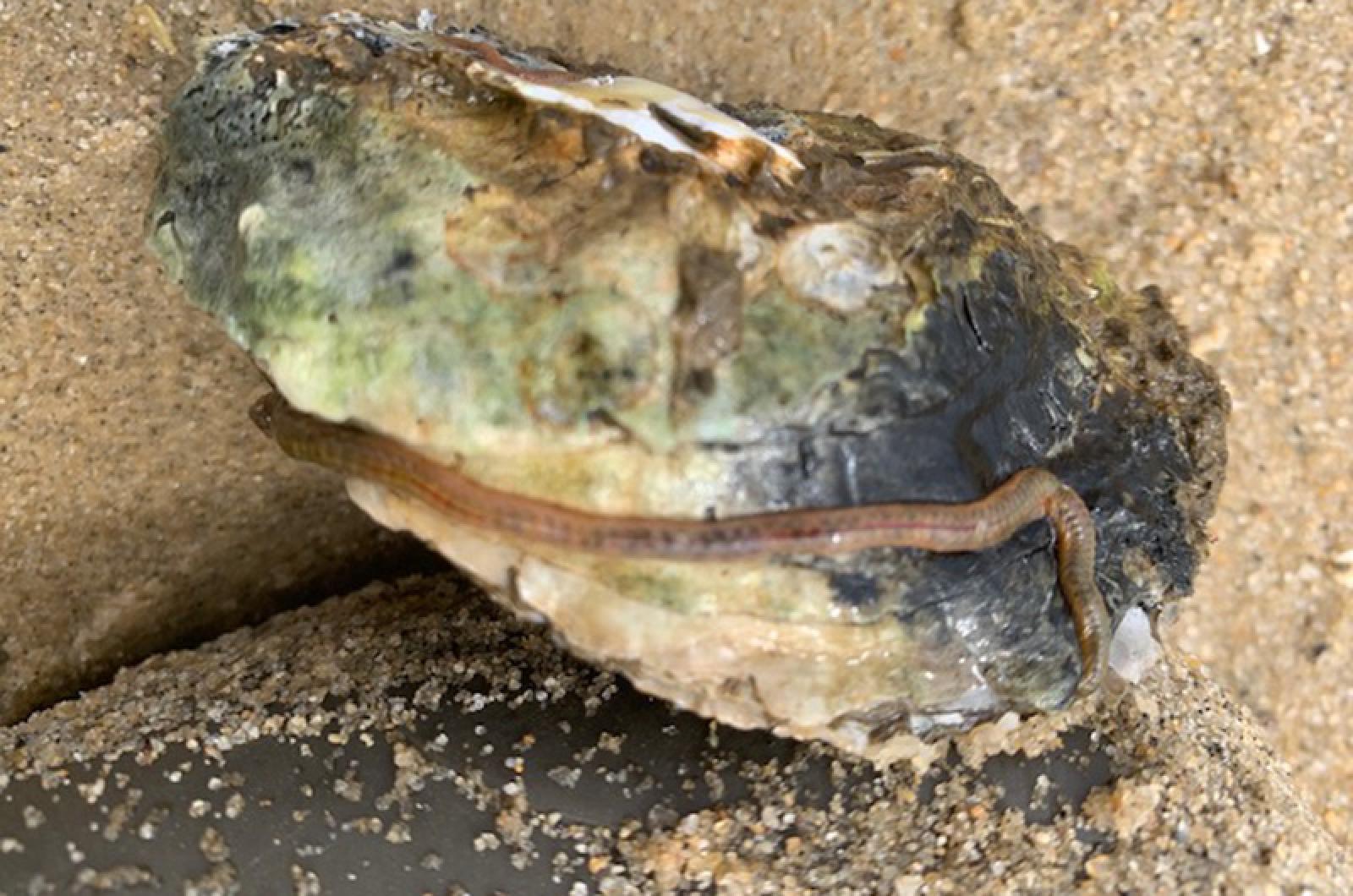As a foodie, naturalist and educator, some recent worm advice really appealed to me. It came from John Supan, professor and director of Louisiana Sea Grant’s oyster research laboratory and is a suggested response to worms found on raw oysters served in a restaurant.
Of the worm on the bivalve the author notes, “They are absolutely harmless and naturally occurring. If a consumer is offended by it while eating raw oysters, just wipe it off and ask your waiter/waitress for another napkin.”
But here is my favorite part: “Better yet, if there are children at the table, ask for a clear glass of water to drop the worm in. They are beautiful swimmers and can be quite entertaining.”
Food and fun, dinner and a show, all from a single (yet cohabitating) oyster.
This year’s oyster season is winding down. My days of plucking fresh shellfish from Tisbury Great Pond have come to an end with the closing of the season at the end of April. I am left with many magical molluscan memories: nights with a bivalve-full belly, the scent of the sea and mignonette, and scads of slithering worms.
For most, the sight of worms in food lessens its appeal. But for me, it has the appeal of a lesson.
Marine worms are common and numerous in our waters. There are many species, but an interesting one on oysters is the parasitic mud worm. Parasites are underrated and underappreciated. The very term is often instinctively thought of as an insult, rather than a scientific description.
Parasites are much maligned. One study finds that in more than 70 per cent of conservation textbooks, parasites are portrayed as threats to conservation or are not mentioned at all. The truth of the matter is that, like other predators, they serve an important role. They are food themselves, they support and stabilize the food web, they regulate population sizes, and are in fact the most predominant lifestyle on earth.
Aquaculturists and shellfishers would disagree in the case of the value of the mud worm. The life of this polychaete makes it appear to be more of a freeloader and pillager than a beneficial buddy.
Mud worms, also called blister worms, live in the shells of oysters and create blisters or bulges on the bivalve’s shell. Within these blisters will be found mud and excrement from the creature that don’t well mix with your cocktail sauce. However, if the careful shucker can avoid them, their contents won’t spill into the pristine flesh of the delectable oysters inside.
At full capacity, one oyster can harbor more than 100 of these wigglers! In large numbers, harm to the oyster can occur. Because the oyster must create replacement shell to strengthen the damage that the worms can do, it will grow more slowly than non-infected oysters. And some reports suggest that the meat of affected oysters can be more watery and less appealing.
That matters not to the worms who have spent their entire adult lives between the nacre layers of the oyster’s shell, creating a network of tunnels for their home and hearth, but not for their sustenance. Mud worms feed by protruding their tentacles outside of the shell and capturing food floating by. In their youth, though, they were adrift as plankton.
Lest you think that mud worms only damage others, consider the ravages of their reproduction. Female mud worms create an egg sack with hundreds of eggs, some that will hatch into larvae and others that serve as nurse eggs for consumption by their larval siblings. When all of those nurse eggs are eaten, larger siblings can turn on smaller siblings and make them a snack too. Mud worm cannibalism can be happening in the shell of the oysters even as they simply survive in the sea.
So don’t get too upset when you find that worm on your oyster. While the world might be your oyster, that oyster is pretty much the worm’s whole world.
Suzan Bellincampi is director of the Felix Neck Wildlife Sanctuary in Edgartown, and author of Martha’s Vineyard: A Field Guide to Island Nature and The Nature of Martha’s Vineyard.







Comments (1)
Comments
Comment policy »